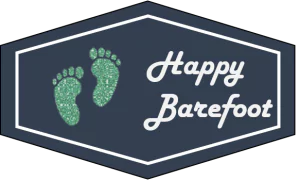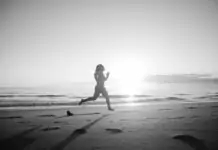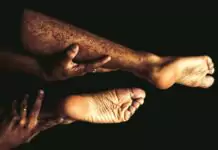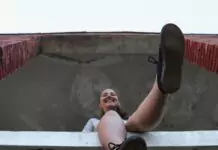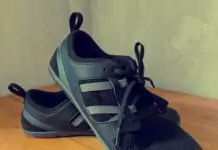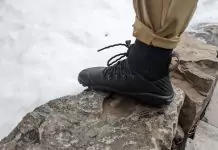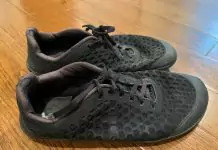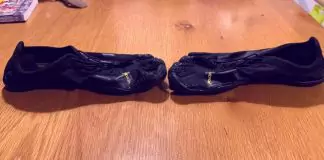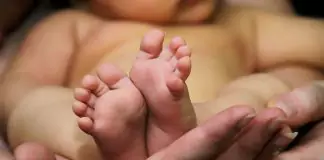Transitioning from traditional to minimal shoes should be a steady process. It’s not advisable to do it abruptly because the feet won’t be able to adapt to the change fast enough. Unfortunately, plenty of people jump on the trend of wearing barefoot shoes, thinking that they will be able to reap the benefits instantly. That’s not the case as transitioning incorrectly could cause injuries.
Whether you want a pair of minimalist shoes for everyday use or for running, it’s best that you know how to shift safely.
The Problem with the Shoes of Today

A study conducted by the American Podiatric Medical Association (APMA) found that heel pain is one of the top problems of Americans. Despite the improvements made in today’s footwear, many of these heel pain sufferers say that their shoes don’t help relieve their discomfort.
It’s most likely because most conventional shoes do not follow the foot’s natural shape, causing an awkward fit and, most often, pinched toes. A study has shown that a narrow shoe can be a contributing factor to chronic foot pain. It’s similar when talking about sizing. Did you know that a large portion of the population does not wear the correct size of shoes? According to another study, this increases the likelihood of experiencing foot disorders.
Another kind of footwear to examine would be running shoes. Next to casual shoes, plenty of people have running shoes because of their style and their function for training. Running puts a good amount of stress on weight-bearing joints like the knee and ankle. Over time, issues can arise. Modern running footwear aims to lessen the likelihood of injuries by equipping running shoes with different technologies. Unfortunately, running-related injuries are still prevalent despite the creative tweaks made by running shoe companies.
You would think that with all this new technology and money invested into shoe research, there would be some progress in reducing running injuries. After all, it’s been over 40 years of shoe companies reinventing and claiming that their newest model will improve the current situation. But studies show that there has been no improvement, and some even show an increase in injuries since shoes, more and more, interfere with the natural foot shape and movement.
What Minimal Shoes Do
Barefoot shoes go against the grain because they don’t correct a person’s gait pattern nor do they pinch the toes. On the contrary, they don’t restrict the foot. Instead, they provide the utmost freedom of movement because they’re not equipped with unnecessary features.
Sometimes referred to as zero drop shoes, they allow the toes to splay while offering little to no functional support. Barefoot shoes do not have cushioning, a heel counter, a heel, structural support for the arch, and so on. Its main features are a flexible yet protective sole and upper, a wide toe box, and a fleet heel. That’s all there is so the footwear can mimic being barefoot as close as possible.
Since it doesn’t have cushioning, you might think that the impact on the joints, the Achilles heel, and the ankle might be greater. But these shoes will make you run and move differently in a way that will spread the impact much more evenly. And, the footwear can also improve performance in many ways, such as in a study that was published in 2020, “minimalist shoes would improve running performance-related including economy and build the cross-sectional area and stiffness of Achilles tendon…”
Steps to Transitioning to Minimal Shoes

As mentioned, it’s not advisable to switch from conventional shoes to minimal shoes without going through a specific process. This is, perhaps, the biggest mistake a beginner barefoot shoe wearer can make. Remember that the effects of decades of wearing tapered toe boxes and cushioned shoes cannot be undone in a day.
So, how is it done? First, it depends on your purpose. How are you going to use your minimalist shoes? Would it be for running? Or, would it be for just everyday use? The steps for each purpose are different so you need to determine this before starting your transition. Next, we recommend following these steps:
Step 1
You have to understand that your transition will take some time. Do not be impatient, and take it slow. What you’re going to go through is conditioning. You’re going to condition your feet so that they are ready to wear zero drop shoes for walking or for running. At the same time, when you are patient with your process, you mentally don’t create a deadline for yourself to reap the benefits of naturally healthy feet.
Step 2a (For Walking/Everyday Use)
More or less, it will take 2 months for your feet to get used to wearing minimal shoes. Since your pair is only for walking or for everyday use, it is recommended that you start by wearing your minimalist shoes an hour each day for 1 week. Then you increase the number of hours each day by 1 until you reach 2 months. Your schedule will look like this:
- Week 1 – 1 hr/day
- Week 2 – 2 hrs/ay
- Week 3 – 3 hrs/day
- Week 4 – 4 hrs/day
- Week 5 – 5 hrs/day
- Week 6 – 6 hrs/day
- Week 7 – 7 hrs/day
- Week 8 – 8 hrs/day
*As an option, you can also go barefoot instead of wearing minimalist shoes.
Step 2b (For Running)
The process is very different when transitioning to minimal shoes for running. Don’t expect to run the same amount of mileage as you do with your modern running shoes. For starters, you should do your running on a hard surface so you instantly know if you’re heel striking. Eventually, you can do it on softer surfaces like grass if you’re already used to wearing minimal shoes for running.
Now you can begin your conditioning:
- Start with 200 yards barefoot or wearing minimalist shoes for running. It’s not much, but your feet will really feel the difference.
- Skip the next day.
- On day 3, add 100 yards. Then skip the day after.
You’re going to be repeating this process for 3 months. You have to run barefoot or wear minimal running shoes every other day. You can increase your distance or your running time gradually. Stop anytime you feel pain, and don’t forget to rest before continuing.

Of course, this is a very general training plan. We recommend that you consult with professional running coaches. Vivobarefoot recommends these 2 top coaches. You can look for them and their recommendations online, or search for similar ones.
Also, you can look into our shoe database to search, compare prices and specs of minimal shoes. We upload only minimal shoes.
